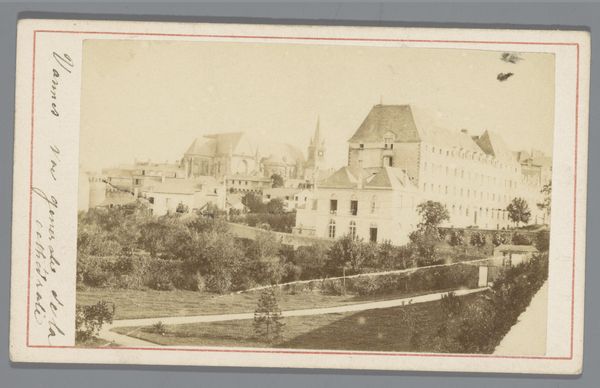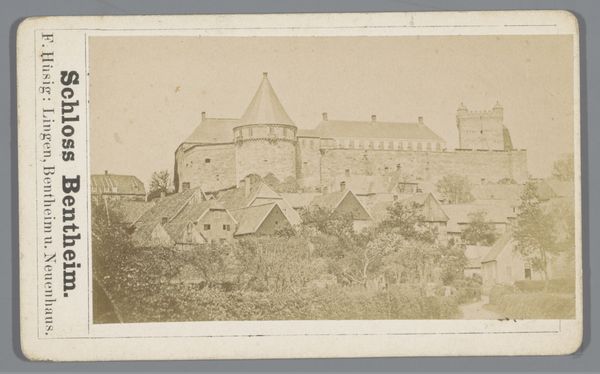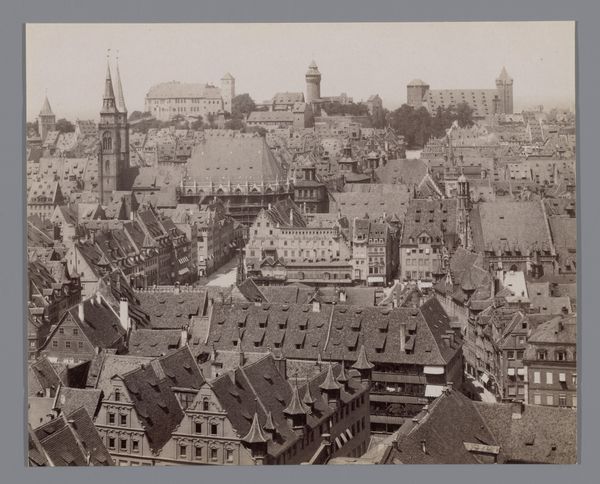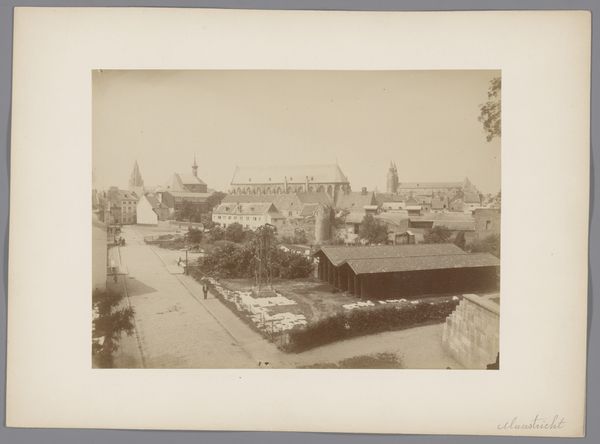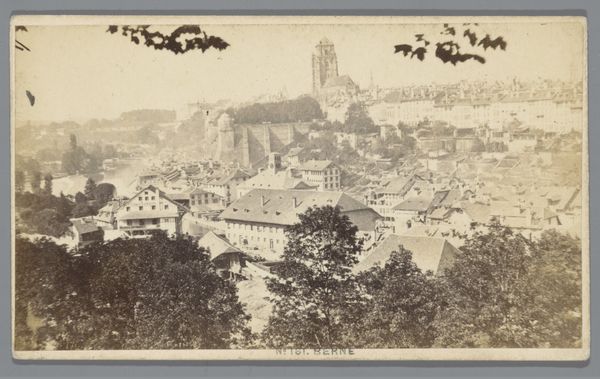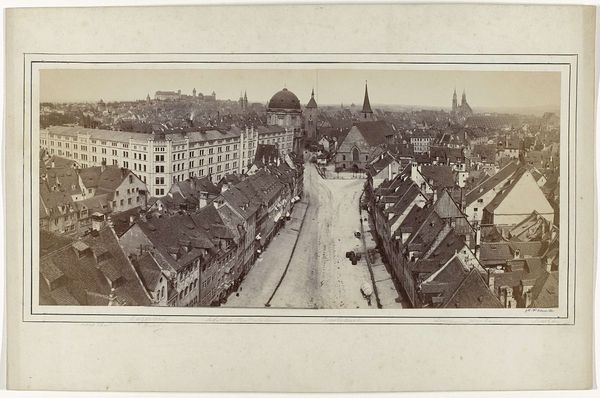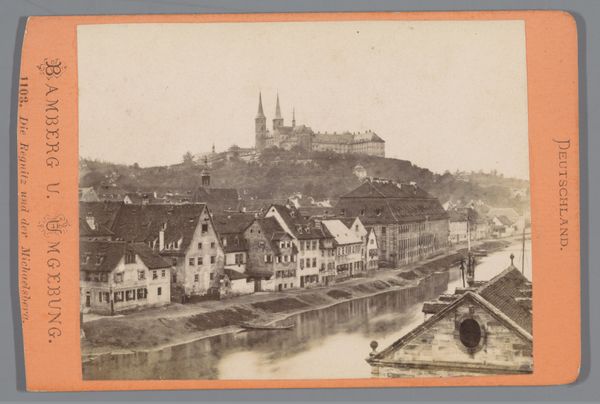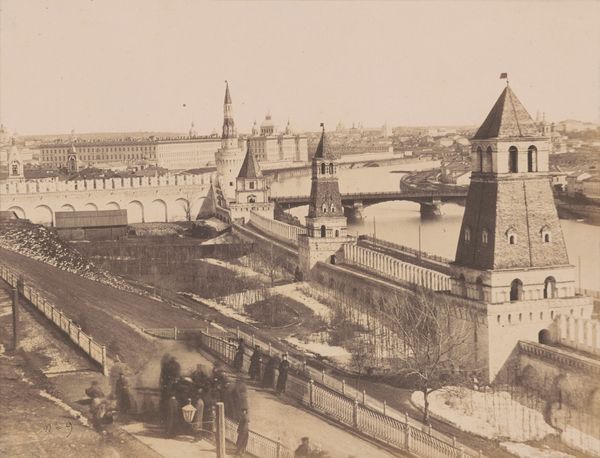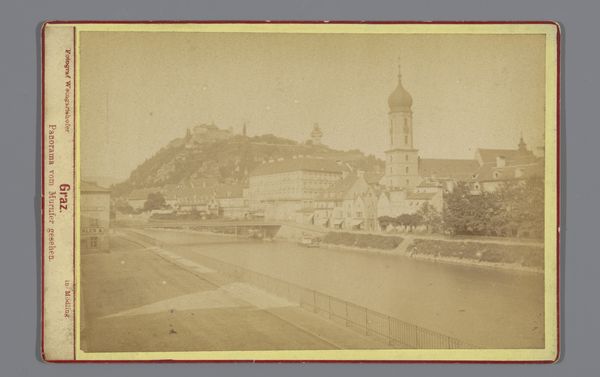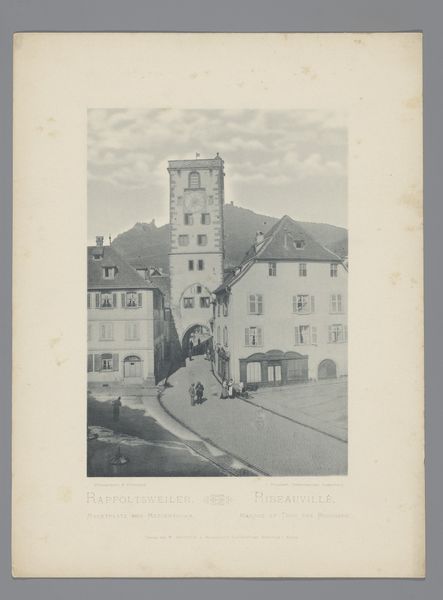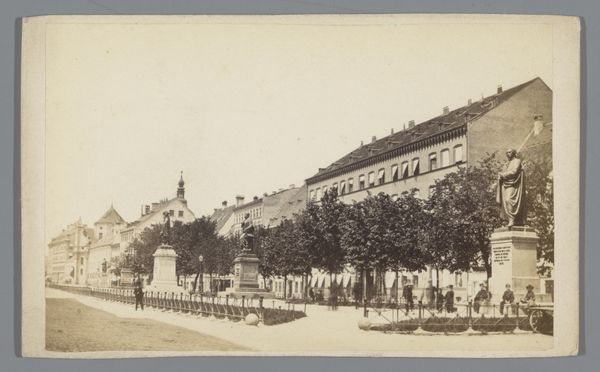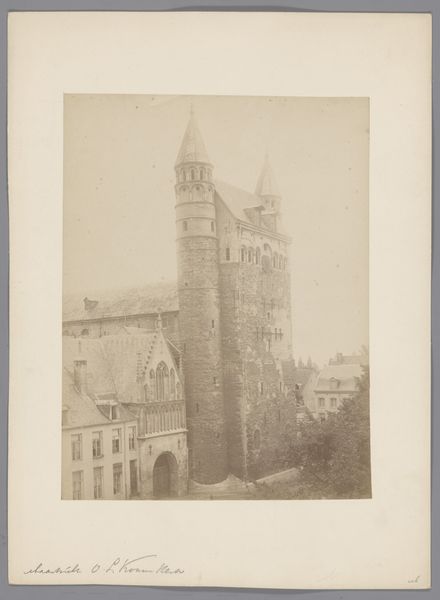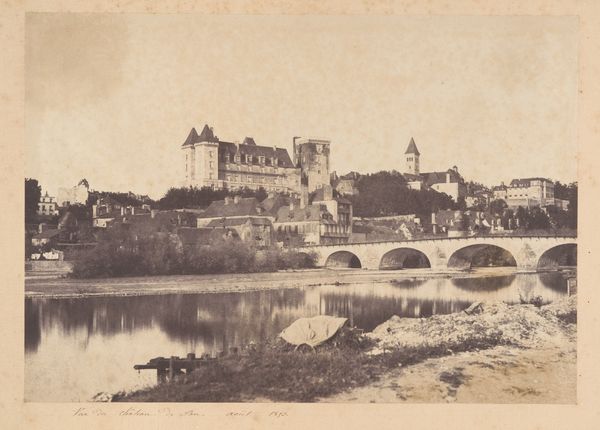
Dimensions: height 208 mm, width 266 mm
Copyright: Rijks Museum: Open Domain
Editor: Here we have Ferdinand Schmidt’s photograph, “Gezicht op de burcht van Neurenberg,” taken sometime between 1870 and 1890. The tones are muted, almost dreamlike, which contrasts with the rather severe architecture depicted. What strikes you about this cityscape? Curator: Well, first, I consider the medium: photography. Think about the industrialization that allowed for the mass production of photographic materials at this time. This image isn't just about representing Nuremberg; it's about the changing ways of seeing and the increasing accessibility of image-making through chemical processes. How does that influence our understanding? Editor: That's interesting, because the Romantic style seems to yearn for an older, perhaps more ‘authentic’ mode of seeing. How does photography fit within that artistic context? Curator: It's a negotiation. Photography enabled Romanticism to document and disseminate its idealized versions of nature and historical sites to an exponentially broader audience than painting ever could. But look closer: The image-making process involves labor—from the photographer to the factory workers producing the plates. What sort of access to that technology was afforded at this time? Who benefitted? Editor: So, you’re saying the dreamlike quality I initially observed is less about Romanticism’s nostalgic mood, and more about the specific techniques and social conditions surrounding the photographic process? Curator: Precisely. The material conditions always shape the artistic output. Romanticism itself was only accessible through complex patronage networks! Editor: This makes me see the photograph as more than just a historical document or a work of art; it's evidence of the social and economic transformations happening at that time. Curator: Indeed. The means of production—both artistic and industrial—are essential to our understanding. Editor: I'll never look at photography the same way again! I've definitely learned how materiality influenced 19th Century artists' choices and cultural expressions. Curator: It shows how considering materials helps ground artistic intention to specific temporal and socio-economic realities.
Comments
No comments
Be the first to comment and join the conversation on the ultimate creative platform.

